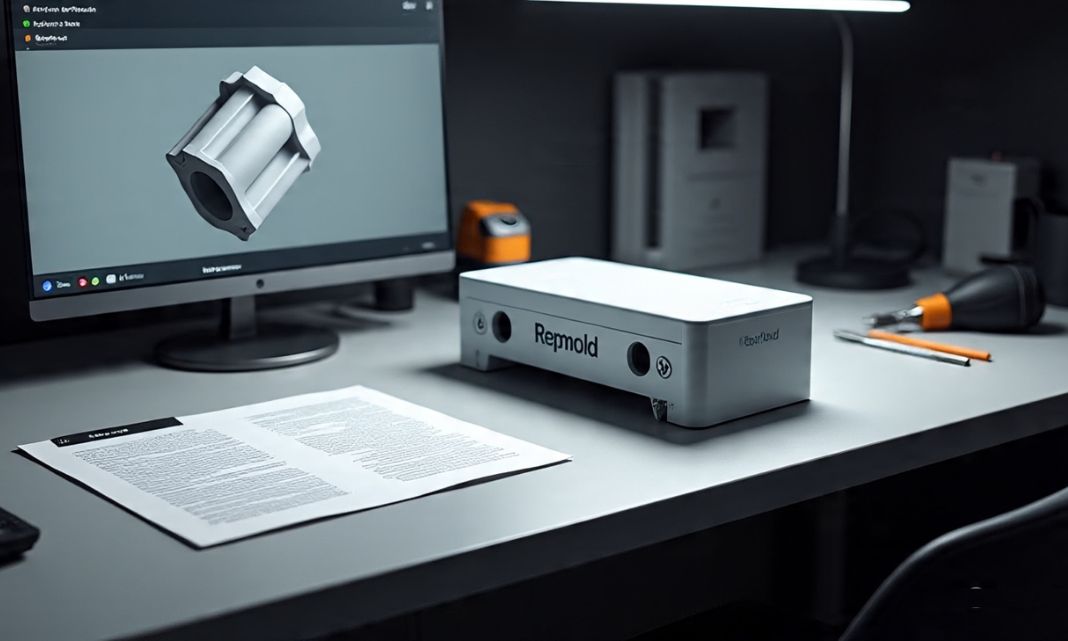If you have recently come across the word Repmold, then you must be wondering what it means and why it is being discussed in industries. At first glance, the term sounds like a mixture of “replication” and “mold”—and it is not far from the truth.
In modern manufacturing and design, Repmold refers to advanced mold-making and replication technologies that allow industries to create accurate copies, prototypes, and finished products.
The real power of Repmold lies in how it combines traditional mold-making with state-of-the-art digital techniques, making it useful in many areas such as automotive, healthcare, consumer goods, aerospace, and rapid prototyping.
In this full guide, we will explain:
- What is Repmold
- How it works
- Repmold in industries
- Benefits and challenges
- Future approach
By the end, you will understand why Repmold is a major technique in modern manufacturing.
What is Repmold?
At its core, Repmold is the process of making a special mold that is designed to create replicas or accurately manufactured parts.
Unlike traditional molds—which often take a long time to design and refine—Repmold emphasizes efficiency, cost-effectiveness, and accuracy.
Think of it this way:
- Traditional mold-making → like sculpting a statue from scratch.
- Repmold → like having an ideal template that lets you reproduce the statue several times without losing detail.
Its adaptability is another major strength. Repmold works with plastic, metal, composite, and hybrid materials, making it a flexible solution for both prototypes and mass production.
Development and Evolution of Repmold
The concept of mold-making has existed for centuries—for metals, pottery, or mechanical parts.
Over time, digital technologies such as CAD (Computer-Aided Design) and CNC (Computer Numerical Control) revolutionized how molds were made.
Repmold emerged as a fusion of traditional methods with digital accuracy, offering:
- Fast design cycles
- High accuracy
- Better cost efficiency
Today, the Repmold industry represents the next stage in Industry 4.0, aligning with smart manufacturing and automation trends.
How Repmold Works: Step by Step?
While each project is unique, most Repmold processes follow these stages:
- Design Phase – Using CAD software to create an accurate digital model.
- Mold Creation – The digital design is converted into a physical mold through CNC machining, 3D printing, or hybrid techniques.
- Replication – Materials (plastic, metal, composite) are injected, pressed, or inserted into the mold.
- Testing and Refinement – Prototypes are tested for durability, function, and accuracy.
- Mass Production – Once validated, the mold is used continuously for production.
This streamlined workflow is why Repmold is faster, cheaper, and more accurate than older methods.
Major Industries Using Repmold
1. Automotive
- Precision engine parts, interiors, and prototypes.
- Ensures safety, durability, and reduced costs.
2. Healthcare and Medical Devices
- Used for implants, surgical tools, and clinical devices.
- Meets strict regulatory standards and speeds up innovation.
3. Consumer Goods
- Home appliances, tech gadgets, and packaging.
- Enables rapid product launches and cost-effective upgrades.
4. Aerospace
- Lightweight yet durable parts for aircraft and spacecraft.
- Handles extreme conditions with high accuracy.
Benefits of Repmold
Businesses are adopting Repmold due to its strong advantages:
- Cost-Effectiveness – Reduces waste and lowers production costs.
- Faster Time-to-Market – Speeds up product launches.
- High Precision – Ensures accuracy with digital design.
- Material Flexibility – Works with metals, plastics, and composites.
- Scalability – Suitable for both prototypes and large-scale production.
Challenges and Limitations
While powerful, Repmold has some challenges:
- Initial Setup Cost – High investment in equipment and training.
- Material Restrictions – Some specialized materials may not be compatible.
- Skill Requirements – Requires trained technicians for best results.
Nevertheless, for most industries, the benefits outweigh the limitations.
The Future of Repmold
Looking ahead, Repmold will only become smarter and more sustainable:
- AI-driven design to detect errors automatically.
- 3D printing integration for faster prototyping.
- Eco-friendly materials to reduce environmental impact.
- Smarter automation that adapts molds in real time.
As industries embrace Industry 4.0, Repmold is ready to become the cornerstone of modern manufacturing.
Conclusion
Repmold is not just another buzzword—it is a game-changing process in mold-making and replication.
From reducing costs and speeding up production to improving accuracy and scalability, it provides immense value across industries.
If you are in automotive, aerospace, consumer goods, or healthcare, Repmold is already shaping the way products are designed and manufactured.
For entrepreneurs and innovators, it opens opportunities for affordable prototypes and faster product launches.
In short: Repmold is the future of manufacturing—and the future is already here.
FAQs About Repmold
Q1: What does Repmold mean in simple words?
Repmold is the process of creating modern molds that allow companies to quickly and cost-effectively make accurate replicas of products.
Q2: Which industries benefit the most from Repmold?
The main industries include automotive, healthcare, consumer goods, and aerospace.
Q3: Is Repmold the same as 3D printing?
Not exactly. While 3D printing can be part of the process, Repmold is broader and combines multiple mold-making and replication techniques.
Q4: Is Repmold expensive?
The setup cost may be high, but in the long run, it saves money by reducing waste and speeding up production.
Q5: What is the future of Repmold?
Expect AI, automation, and eco-friendly innovations to make Repmold faster, smarter, and more sustainable.

